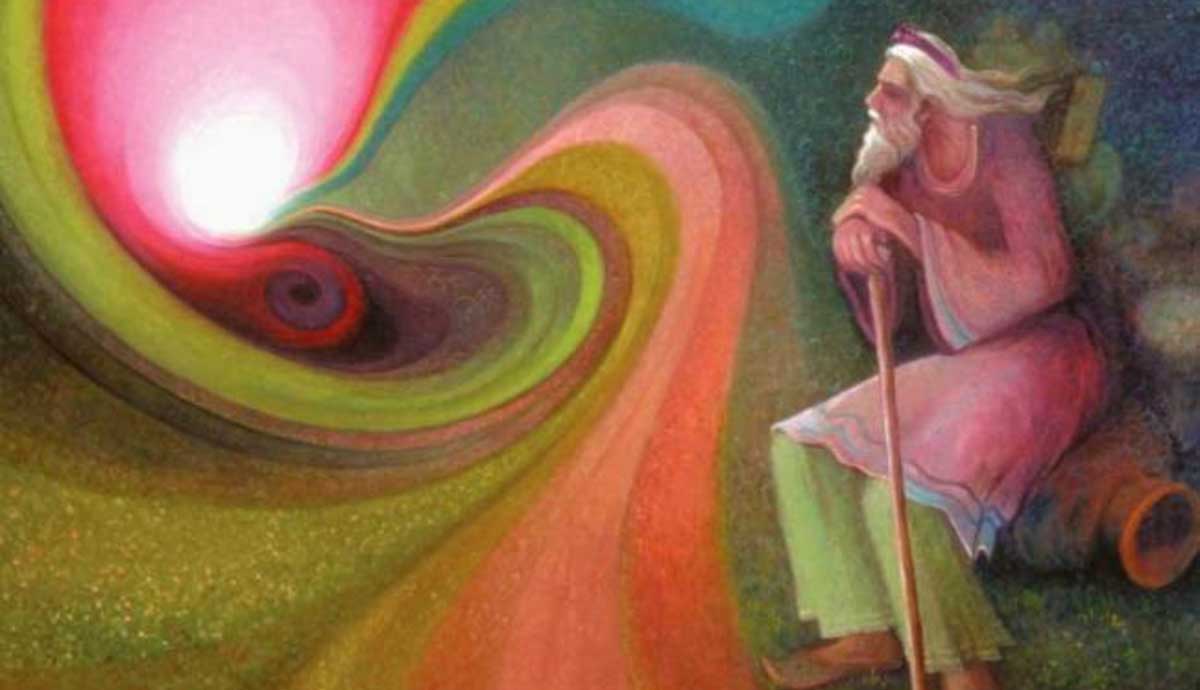
Commonly referred to as Al-Shaykh Al-Akbar (The Greatest Master), Ibn Arabi was born in 1165 CE in southern Murcia. He was the only son of an elite Andalusian family of noble Arab origins. When he was eight years old, his family moved to Seville, where his father held a high position in the service of Sultan Abou-Ya’qub. Like the son of any high society family, Ibn Arabi received the best education available at his time. Once a teenager, he started accompanying his father on his trips, where he got introduced and integrated into the elect circles of Andalusia and was even promised a dignified political position. His path was traced out, secured by his father’s footsteps, but little did the young boy know of the wild and unpredictable path awaiting him.
The Time of Ignorance

Seville was the gleaming pearl of Andalucía, characterized by a captivating, almost legendary allure that colored the inks of all poets in the Arab world, who referred to the city as the ‘fiancée’. It was the hub of civilization, from which the most influential philosophers, scientists, and polymaths flourished during the Islamic Golden Age. Seville was a metropolitan city weaving together people from all racial backgrounds and faiths into a tapestry of “debauchery and asceticism, depravity and sainthood”, where all social contradictions found harmony in the bustling heart of the ‘fiancée’ (Addas, 1993). No wonder that young Ibn Arabi was bewitched by this dazzling atmosphere, to the extent that he referred to this period of his life there as “the time of my jahiliya’ (ignorance), which is a term typically used by historians in reference to pre-Islamic Arabia.

Ibn Arabi was just a normal teenager, immersed in the pleasures of life and neglectful of any deeper affairs. He wasn’t a strict religionist either, as he seemed to be slacking off basic religious duties that were normative at the time. In a passage, he tells us that he enjoyed listening to musicians and artists with his friends till dawn, after which he’d either miss the Islamic prescribed prayer or he’d perform it while being completely absorbed in thoughts about the exciting evening he just had, or frustrated that the Imam is taking too long to complete the ritual prayer. There seemed to be nothing particularly exceptional about the young boy’s life. So how did this ordinary teenager grow to become known as ‘the Greatest Master’?
The Journey of Return

Ibn Arabi’s journey started with a certain calling that led him to withdraw into solitary spiritual retreats, known as khalwa, where he had powerful mystical experiences that endowed him with great wisdom. Among them was a vision of Moses, Jesus, and Muhammad, to which he attributed the completion of his journey of return, or conversion, to God. The news of his experiences and knowledge circulated in Andalusia and attracted the interest of one of the most respected philosophers at the time, Averroes. Although Ibn Arabi was only 15 years old, Averroes asked him to verify the conclusions he had attained throughout his philosophical endeavors!

Although Ibn Arabi refers to Jesus as his first real teacher, he had experienced these visions without any prior effort or spiritual training with a guide. According to Sufi thought, training through the stages of the Way is indispensable for any mystic even if they had already experienced the greatest theophanic visions, the idea best encapsulated in their idiom: “Any fool can find God, but only a disciple can learn how to work with God”. And so, Ibn Arabi became the disciple of Abu Madyan, who put Abu Abas Uryabi in charge of his training. Later on, Ibn Arabi would have countless guides, and among them was a Cordobian woman called Fatima Bint Ibn Al-Muthana.
Travels and Works

Throughout his journey, Ibn Arabi traveled to many countries where he published countless works, each inspired by a unique visionary experience. He visited Tunisia, Morocco, Palestine, Syria, Egypt, and, most importantly, Mecca, where he wrote “The Meccan Revelations” hand “The Translators of Desires”. Although there are over 300 books under his name, his magnum opus is considered to be “The Bezels of Wisdom”, which he wrote during his final days in Morocco before he passed away in 1240 CE. The school of thought dedicated to the study of his works is called Akbarianism, where his last book is deemed to encapsulate the core of his teachings.










